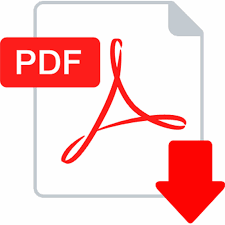
DOI: 10.32702/2307-2105-2022.1.93
УДК: 519.86
М. Б. Чижевська, С. А. Щербініна, Я. А. Красун
ЗАСТОСУВАННЯ ВИРОБНИЧОЇ ФУНКЦІЇ ДЛЯ АНАЛІЗУ ДІЯЛЬНОСТІ ПРОМИСЛОВОГО ПІДПРИЄМСТВА
Анотація
У статті розглянуто теоретичні аспекти та методичні підходи використання виробничих функцій в економічних дослідженнях. Побудовано економіко-математичну модель для аналізу діяльності промислового підприємства Полтавської області із застосуванням виробничої функції Кобба-Дугласа, що дозволяє встановити залежність результативної ознаки від витрат на оплату праці та матеріальних затрат. Для визначення адекватності вибраної математичної моделі експериментальним даним визначено оцінку тісноти та значимості зв’язку змінних у регресійній моделі. Проаналізовано отримані в результаті розрахунків частинні та сумарний коефіцієнти еластичності. Для більш повного уявлення взаємозамінюваності факторів виробничої регресії досліджено її ізокванту, що дає можливість розглядати різні комбінації факторів, яким відповідає сталий чистий дохід від реалізації продукції (товарів, робіт). Побудовану виробничу функцію Кобба-Дугласа використано для прогнозування результативної ознаки з надійністю 95%. Економіко-математичну модель реалізовано у програмному пакеті MS Excel 2016. Наведену методику дослідження можна застосовувати для аналізу діяльності підприємства незалежно від виду його економічної діяльності.
Ключові слова: виробнича функція Кобба-Дугласа; виробничі фактори; адекватність; коефіцієнти еластичності; ізокванта.
Література
1. Вітлінський В.В. Моделювання економіки: Навч. посібник. К.: КНЕУ, 2003. 408 с.
2. Грабовецький Б.Є. Виробничі функції: теорія, побудова, використання в управлінні виробництвом. Монографія. Вінниця: УНІВЕРСУМ, 2006. 137 с.
3. Грабовецький Б.Є. Використання виробничих функцій як засобу вдосконалення управління бурякоцукровими підприємствами. Науковий вісник Ужгородського національного університету. 2016. №8. С. 49-54.
4. Грабовецький Б.Є., Тарасюк Н.М., Безсмертна О.В. Використання виробничих функцій в дослідженнях підприємств молокопереробної промисловості. Вісник Вінницького політехнічного інституту. 2013. №5. С. 32-36.
5. Кравцов О.О. Моделювання виробничої функції промислового підприємства. Проблеми системного підходу в економіці. 2019. №4. С. 208-213.
6. Янковий В.О. Економіко-математичні властивості виробничої функції Кобба-Дугласа і CES-функцій. Східна Європа: економіка, бізнес та управління. 2017. №2(07). С. 330-336.
7. Шерстенников Ю.В., Рудянова Т.М. Аналіз динаміки розвитку малих підприємств із застосуванням трифакторної виробничої функції. Вісник Дніпропетровської державної фінансової академії. 2009. №1. С. 151-158.
8. Черкашина Т.С. Виробнича функція Кобба-Дугласа як інструмент політики економічного зростання України в умовах ринкових реформ. Економіка та суспільство. 2020. №21. С. 28-37.
9. Ковальов А.І., Літвінов О.С. Інтелектуальний капітал як фактор виробничої функції підприємства. Науковий вісник Ужгородського національного університету. 2019. №24. С. 58-63.
10. Благодир Л.М. Методичні засади оцінювання ефективності функціонування підприємства із використанням виробничих функцій. Економіко і суспільство. 2016. №4. С. 378-384.
М. Chyzhevska, S. Shcherbinina, Y. Krasun
USING OF THE PRODUCTION FUNCTION FOR ANALYSIS OF INDUSTRIAL ENTERPRISE ACTIVITIES
Summary
The article considers the theoretical aspects and methodological approaches to the use of production functions in economic researches. The economic content of production functions is to identify the impact on economic growth of each factor of production, including the result of their combined action, ie production functions reveal the mechanism of action of factors of economic growth. There are several hypotheses that distinguish the class of Cobb-Douglas functions among the twice differentiated functions from the two variables to determine the form of the regression relationship. An economic-mathematical model for the analysis of the activity of the industrial enterprise of Poltava region with the use of the Cobb-Douglas production function is constructed, which allows to establish the dependence of the performance indicator on labor costs and material costs. The indicator of net income from sales of products (goods, works) was chosen as the resultant indicator, as this indicator is monetary, used in the official reporting of the enterprise and reflects the amount of income of the enterprise from the main (production) activities of the enterprise. To determine the adequacy of the chosen mathematical model, the experimental data determined the assessment of the closeness and significance of the connection of variables in the regression model. The partial and total coefficients of elasticity obtained as a result of calculations are analyzed. For a more complete picture of the interchangeability of factors of production regression, its isoquant has been studied, which makes it possible to consider different combinations of factors, which correspond to stable net income from sales of products (goods, works). The constructed Cobb-Douglas production function was used to predict the performance trait with 95% reliability. The study showed that the production function allows you to perform analytical calculations, determine the efficiency of resource use, the feasibility of their additional involvement, to forecast production volumes. Economic and mathematical model is implemented in the software package MS Excel 2016. The above research methodology can be used to analyze the activities of the enterprise, regardless of its economic activity.
Keywords: Cobb-Douglas production function; production factors; adequacy; coefficients of elasticity; isoquant.
References
1. Vitlinskyi, V.V. (2003), Modeliuvannia ekonomiky [Modeling the economy], KNEU, Kyiv, Ukraine.
2. Hrabovetskyi, B.Ye. (2006), Vyrobnychi funktsii: teoriia, pobudova, vykorystannia v upravlinni vyrobnytstvom [Production functions: theory, construction, use in production management], UNIVERSUM, Vinnytsia, Ukraine.
3. Hrabovetskyi, B.Ye. (2016), “Use of production functions as a means of improving the management of sugar beet enterprises”, Naukovyi visnyk Uzhhorodskoho natsionalnoho universytetu, vol. 8, pp. 49-54.
4. Hrabovetskyi, B.Ye. Tarasiuk, N.M. and Bezsmertna, O.V. (2013), “The use of production functions in research of the dairy industry”, Visnyk Vinnytskoho politekhnichnoho instytutu, vol. 5, pp. 32-36.
5. Kravtsov, O.O. (2019), “Modeling of the production function of an industrial enterprise”, Problemy systemnoho pidkhodu v ekonomitsi, vol. 4, pp. 208-213.
6. Yankovyi, V.O. (2017), “Economic and mathematical properties of the Cobb-Douglas production function and CES functions”, Skhidna Yevropa: ekonomika, biznes ta upravlinnia, vol. 2(07), pp. 330-336.
7. Sherstennykov, Yu.V. and Rudianova, T.M. (2009), “Analysis of the dynamics of small enterprise development using a three-factor production function”, Visnyk Dnipropetrovskoi derzhavnoi finansovoi akademii, vol. 1, pp. 151-158.
8. Cherkashyna, T.S. (2020), “Cobb-Douglas production function as an instrument of Ukraine's economic growth policy in the context of market reforms”, Ekonomika ta suspilstvo, vol. 21, pp. 28-37.
9. Kovalov, A.I. and Litvinov, O.S. (2019), “Intellectual capital as a factor in the production function of the enterprise”, Naukovyi visnyk Uzhhorodskoho natsionalnoho universytetu, vol. 24, pp. 58-63.
10. Blahodyr, L.M. (2016), “Methodical bases of estimation of efficiency of functioning of the enterprise with use of production functions”, Ekonomiko i suspilstvo, vol. 4, pp. 378-384.
№ 1 2022
Дата публікації: 2022-01-27
Кількість переглядів: 26114

